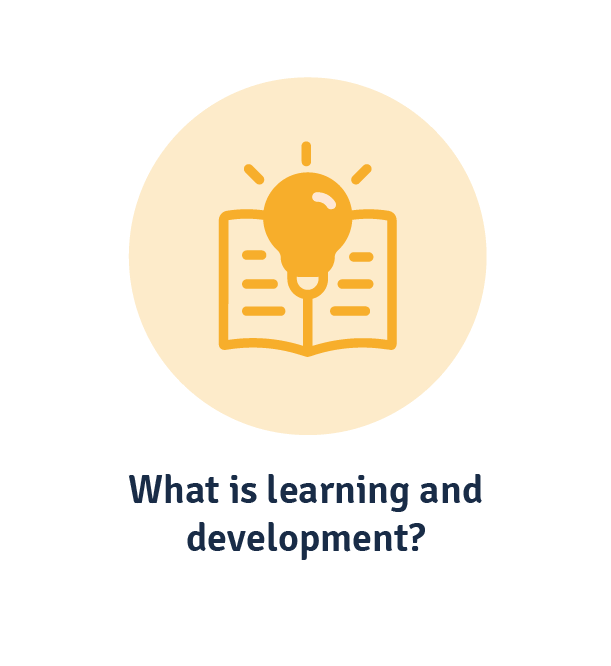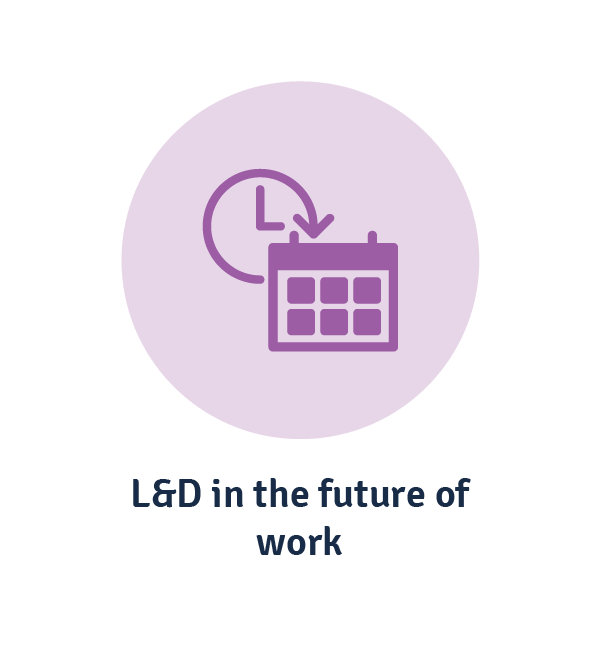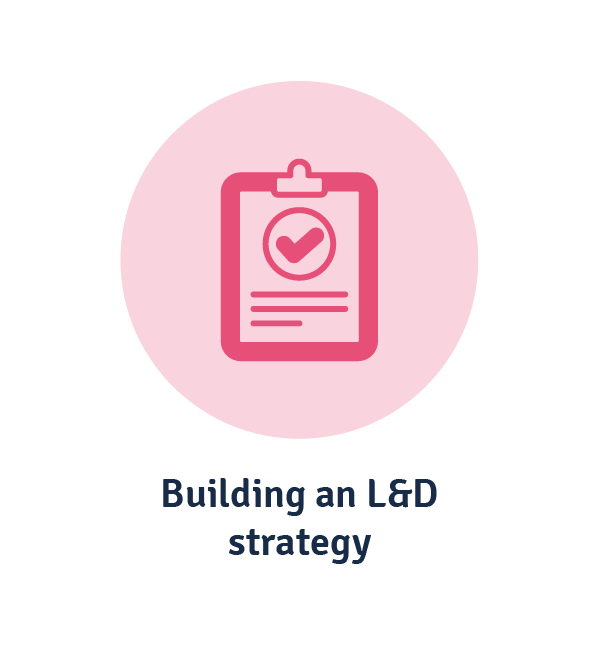Technological and global disruptions, a shorter skill shelf life and a multigenerational workforce mean the modern business environment is ever-evolving. Now more than ever, a clear and effective learning and development strategy is vital to not just talent development, but business goals.
If your L&D is lacking, don’t panic. We’re about to dive right into the best learning and development strategies to better engage your workforce.
What is learning and development?
Learning and development is a systematic process that improves an individual’s skills, knowledge and competency.
The learning half tackles the acquisition of new knowledge, skills and, importantly, attitudes. Development is all about deepening and expanding one’s knowledge in line with progressive goals. Put them together, and what do you get? A change in behaviour, cultivation of attitudes and sharing of knowledge that enables employees to perform better.
The importance of L&D to the future of work
Humour us. We know you know what learning and development is, but it’s often lost in the evolving HR/organisational development/people capability landscape of training and development, talent management, succession planning, corporate training, continual professional development, certification and recruitment.
It’s helpful to know why you’re doing what you’re doing. If you’re not clear on the basics, you’re basically shooting your shot in the dark—meaning you’ll have no clear baseline for any analytics or metrics used to determine success or ROI against business needs. Not only is this a waste of resources and time but, as you’ll come to understand, it’s hard to save for a future without knowing what skills you currently have in the bank.
And in a post-pandemic, remote-enabled working work, there’s even more reason to optimise the learning function in your organisation.
- Productivity is perceived different between the leadership and IC standpoints. Bersin Academy research shows while 87% of employees consider themselves highly productive, just 12% of leaders take the same view of their workforce.
- The same research found the talent pool is shrinking; you can’t rely on external recruitment to counter skills gaps and turnover.
- According to LinkedIn Learning, 25% of job skill sets have changed since 2015. That pace will only fasten as industries converge and AI automation displaces certain roles.
- Human skills like management and teamwork are more important than ever with the rise of remote and dispersed teams.
- Intellectual capital depreciates without ongoing investments but compounds with maintenance. McKinsey found that organisations who specifically invest in the next generation of leadership are 2x more likely to hit performance targets.
L&D today is not just about workplace learning, but career development, employee engagement, lifelong learning, and creating sustainable business practices.

Consider your learning and development team a ubiquitous part of the organisation rather than a siloed function. You’re not so much a lifeline as you are the spine of the business itself.
How to build a learning and development strategy
If L&D underpins business, then it pays to start any strategy by figuring out what you’re trying to optimise, institutionalise or introduce. Remember: Every good L&D strategy should have clear business objectives.
- The obvious choice is digital transformation; many organisations clean L&D house and introduce entirely new learning management systems, development initiatives and even capability frameworks to replace an underperforming function.
- Perhaps you’re optimising your talent and learning functions by bringing them under one umbrella, and designing new learning solutions to match new objectives.
- Aiming to institutionalise best practice knowledge sharing is another great reason to revamp your L&D strategy. What is employee training, if not a way to teach your business processes, tools and culture as much as job-related capabilities?
Whatever your goals, we recommend etching them out first so you can work backwards through your strategy. You need to know exactly what learning and development is trying to achieve before you can work out how it’s going to get done.
Step 1: Identify capability gaps
If you’ve got your end point (L&D objectives), then we need to draw the starting line.
Capability gap analyses are always the best place to start, since your organisation should be structured around a capability framework.
This doesn’t just mean noting if your people are performing good or bad, but evaluating the level of maturity of capabilities. At the organisational level, that is:
- The availability of any given capability in your organisation, by level of competency and job role
- The impact said capability has on organisational health
- The risk of said capability becoming extinct, judged by its impact.
But to make that work for L&D, you need to translate that to employee performance.
Capability assessments can be done digitally, often within your LMS if you have the functionality. It’s as simple as a roughly three-step process.
- You create a digital record of capabilities (if not already done) and their relevant levels of competency. Each competency is assigned a performance-based question or statement.
- Employees or their managers respond to these performance markers.
- A report is generated and made accessible to the employee, their manager and your L&D or talent development managers to baseline development needs.
A happy side effect of gap analyses is you create a living database of all employees and their existing competencies, which means you have real-time insight into organisational health. Pretty neat, hey?
Step 2: Pinpoint learning objectives
Separate from the learning function’s own directive, learning objectives are unique to each employee development pathway.
To be effective, your learning objectives should align with business strategy. If the goal is transformation, then training programs should till be geared towards building the capacity to facilitate that.
The easiest way to define impactful learning objectives is to pick an aspirational level of competency. For example, let’s say a new manager has been assessed at a foundational competency level for the capability “Coach talent”. The new manager has three people working under them, meaning they need to progress this capability sooner rather than later. The development goal may then be to take them to an advanced competency level in the next 6 weeks.
This shows employees the bigger picture they’re contributing to. If they can’t see how L&D is anchored within the business or designed for career growth, they’ll perceive it as a distraction from their responsibilities.
It helps to define the parameters of development opportunities in general; is it to enhance or to intervene? The pathways to upskill or reskill employees will be different to those designed to materialise new capabilities entirely. Learning goals should further address a pain point or exploit an opportunity.
This is also important when choosing a learning management system. You want an LMS that can support capability plans on top of course creation, so that you can be sure employees have access to mission-critical knowledge and HR can accurately assess individual proficiency.
Step 3: Match learning delivery to needs
It’s not enough to just offer a bunch of rote videos or quizzes and call that an L&D strategy.
The capabilities and competencies being developed will dictate the mode of learning required. Consider methods outside the norm like:
- Social learning, such as lunch & learns or stretch assignments, to get employees out of their comfort zones at work while enabling them to develop or impart relevant knowledge.
- Similarly, collaborative learning like peer coaching and formal mentoring. As an aside, retention rates are shown to increase when mentoring is readily available in the workplace.
- Virtual classrooms. Not only are you catering to a remote workforce here, but you can offer greater access to subject matter experts through virtual seminars or workshops.
- Learning in the flow of work, aka on-the-job training, is necessary to ensure training transfer and learn capabilities in the context they are applied. (The capability “Coach talent” may utilise different methodologies and systems to your competitors.)
- Just in time learning or learning on demand. Not all online learning has to be 10 modules packaged into one long program. Consider short, sharp videos that work through everyday problems that otherwise take employees time to problem solve. For example: How to use certain software.

Another happy side effect: Many of these tactics will cost you almost nothing, just a little time to set up and get buy-in for.
Step 4: Design methods of assessment
There are three approaches here.
- Utilise LMS reporting for specific learning data
- Continue capability assessments for nuanced performance data
- Consistent training evaluation for learning effectiveness data.
The traditional approach to key performance indicators in L&D, LMS reports can give insight into:
- Learning completions
- Time spent
- Repeat visits
- Survey results
- Assessment scores.
All of which speak to the perceived usefulness of the training content you provide and modes of delivery used. These won’t help you prove ROI, only give you an initial insight into learning engagement.
Continual capability assessments give you much clearer insights into performance changes (if any) post-training. They can also be tied into assessing the efficacy of your strategy as a whole, through key L&D metrics like:
- Training cost per employee, i.e. the fiscal return on investments into individual development pathways.
- Knowledge retention and transfer of learning (which speaks to the relevance of learning content).
- Impact of training on performance, specifically shown through capability assessments and against the Kirkpatrick Evaluation Model.
- Training feedback. Direct from employees, you can get subjective clues as to how much training improves their day to day.
- Time to proficiency—underscores time to market and profit down the line.
- Overall training ROI and justification for continued or increased L&D budget.
In saying all that, don’t discount what you can do to optimise learning within an LMS.
Many of these metrics can you the data with which to make informed decisions about time and financial investments. Training feedback may show that employees want more on-the-job or informal learning opportunities to support formal training courses, while ROI calculated proves the value of investing in third-party content providers.
The point is to be able to prove the value of capability building, skill development or general learning programs to business leaders. If you’re reporting to a Chief Learning Officer, you need to be able to give them visual justification they can take to the CEO that shows the positive impact to business.
The pitfalls to avoid for successful learning and development
There are a few scary statistics associated with learning and development gone wrong. We’d like to bring your attention to two that potentially may be having an impact on the efficacy of your learning and development programs.
- According to Gartner, 70% of employees don’t believe they have the mastery of skills needed for their jobs, let alone to do their jobs well.
- In a survey on training programs, McKinsey reports only 25% of respondents believe it improved business performance.
Not to mention, most organisations don’t even track their ROI (see step 4, above). So, while it’s all well and good to design and implement a new training program, the real challenge is reaping the benefits long term. After all, effective learning and development aims for continuous and sustainable learning. It’s all in the mindsets of your learners.
Not understanding learner motivation
While you may think you’re offering professional growth opportunities, the language you use may convey that employees aren’t up to scratch, which is altogether demoralising.
On the flip side, employees may show initial motivation to complete training but not follow through. The intention-behaviour gap (aka the difference between “I’m here because I have to be” or “I can escape work for a bit” and “I want to learn and grow”) shows that you didn’t effectively influence their intent to engage in learning, which shows a fundamental problem with the value proposition for L&D.
Increasing learner engagement
Make clear a new training initiative is not a one-off requisite, but rather a lifelong commitment on your organisation’s behalf to investing in their employees.
Demonstrate it’s a priority to continue the investment indefinitely, such as through clear pathways to certain job roles. Get managers to chat with their teams about career goals, and make them accountable for facilitating growth opportunities in the workplace.
Poor perceptions of L&D
It can be widespread or take just one person to cement L&D as a cost centre.
You get the behaviour you’re prepared to ignore in the workplace: If certain behaviour isn’t admonished, then by default it’s considered acceptable. It takes one Judas—particularly one in a leadership position—to express discontent in a learning and development program for the whole thing to come crashing down.
Changing L&D’s reputation
You have a few tactics to try out here.
- Provide adequate outlets for feedback throughout the learning and development process, such as with feedback prompts within your LMS.
- Create stakeholders in managers. When it’s obvious management not only value but are implementing the suggestions of learners actually undertaking L&D (short and long term), there’ll be less chance of unhappy customers.
- To really win buy in, don’t let L&D be solely transactional and therefore reactive. Be proactive about understanding and solving pain points for functional leaders.
Focusing solely on performance issues
To that last point, don’t wait for specific requests to roll in to L&D.
The problem here is that often there are ripple effects to unmanaged performance, and it’s harder to prove impacts from reactive measures. While they are at times necessary, it does mean you have to focus on undoing damage rather than creating opportunities or nixing emerging problems.
Doing proactive gap analysis
Proactive needs analyses coupled with post-training enablement show clear understanding of the unique needs in your organisation. If you follow our formula, then you’re already on your way with capability assessments.
On the other end, it can be as simple as introducing job shadowing for those on the succession pathway or including on-the-job training as part of an individual’s L&D.
Key takeaways
The times, they are a-changing. New skills, tools and innovations change how your business will get work done, which means that learning and development, by default, needs to be transforming into a high-powered talent engine.
Creating a high-performing L&D strategy needn’t involve mass transformation (unless you need it to). Just follow some key principles to create a strategically-aligned L&D function.
- Get to know your business and its mission and goals. L&D should be aiming to drive those forward.
- Consistently uncover capability gaps in your workforce. The more consistent you are with assessment, the less likely you’ll be facing talent shortages.
- Align any and all objectives for employee capabilities with business needs. Always.
- Institutionalise formal and informal ways of learning.
- Continually assess the efficacy of your strategy. If you don’t know the impact, what’s the point of the strategy at all?
Related Reads on This Topic

How to Measure Impact with the Kirkpatrick Evaluation Model
Are you sure that your L&D programs are actually hitting the business mark?

The How-To Guide to Post-Training Enablement
Post-training enablement is just important, if not more important than training itself.

Learn from these High-Impact L&D Strategies
Big or small, your organisation can and should learn from these high-ROI L&D strategies.




